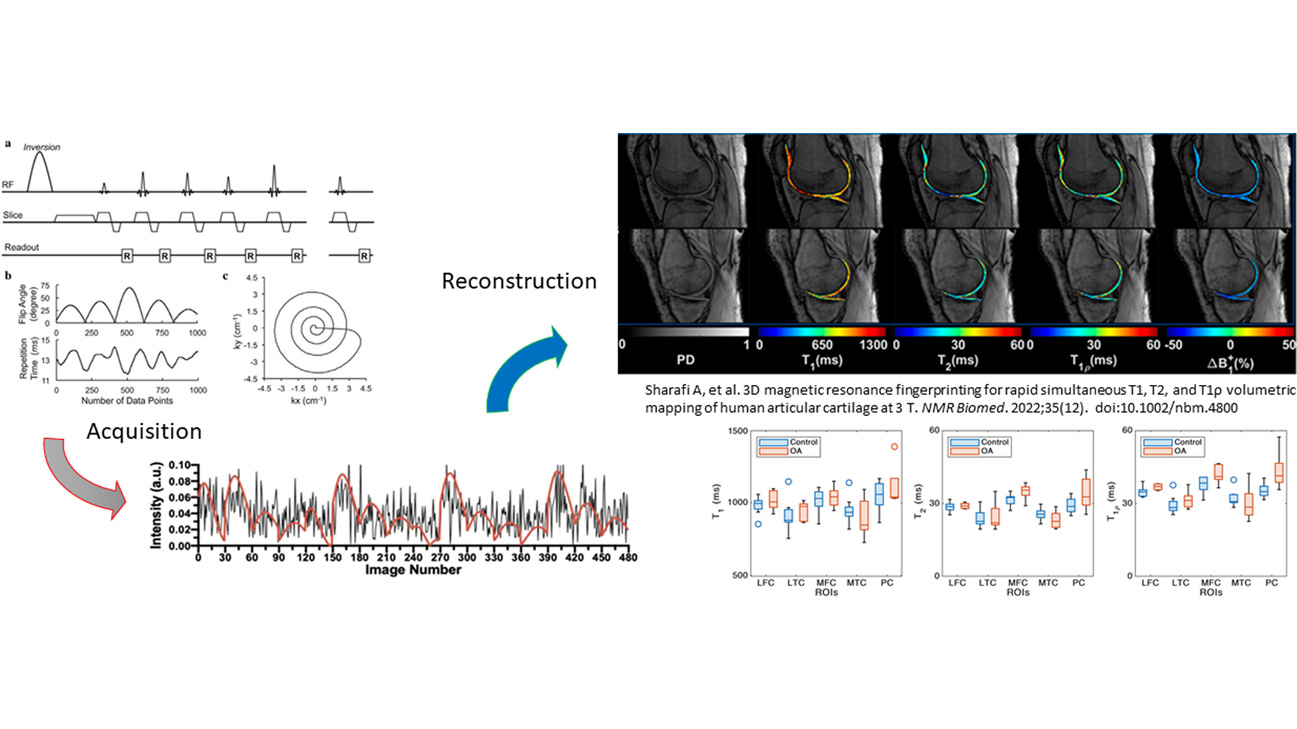Multiparametric Mapping of Knee Joint with Magnetic Resonance Fingerprinting

Overview
This project focuses on the development of magnetic resonance fingerprinting (MRF) methods for magnetic resonance imaging (MRI) of the knee in order to improve early detection of osteoarthritis (OA).
Knee OA is a common degenerative joint disease that causes breakdown of knee cartilage and leads to biochemical, structural, and morphological changes. There is currently no cure for OA. Early detection of cartilage degeneration, critical for interventions and research, requires identifying changes in vivo before visible damage occurs. Quantitative MRI metrics of T1, T2, and T1rho relaxation can detect changes in articular extracellular matrix. However, existing methods are slow and sensitive to noise and magnetic field variations.
MRF is a relatively new technique that makes use of dynamic signal patterns and is capable of simultaneously estimating multiple MRI parameters, an approach that makes scans more efficient and more robust for musculoskeletal applications. In this project, we enhance MRF with advanced machine learning techniques to improve early detection of OA in the knee.
Keywords
- Knee OA
- T1rho
- MR Fingerprinting
Project Team
External Collaborators
- Gregory Chang, MD, MBA , NYU Langone Health
- Steven Abramson, MD, NYU Langone Health
- Jonathan Samuels, MD, NYU Langone Health
Publications
- Sharafi A, Zibetti MVW, Chang G, Cloos M, Regatte RR. 3D magnetic resonance fingerprinting for rapid simultaneous T1, T2, and T1ρ volumetric mapping of human articular cartilage at 3 T. NMR Biomed. 2022;35(12):e4800. doi:10.1002/nbm.4800
- Kijowski R, Sharafi A, Zibetti MVW, Chang G, Cloos MA, Regatte RR. Age-Dependent Changes in Knee Cartilage T1 , T2 , and T1p Simultaneously Measured Using MRI Fingerprinting. J Magn Reson Imaging. 2023;57(6):1805-1812. doi:10.1002/jmri.28451
Acknowledgements
We acknowledge support from the following NIH grant: NIH-R01 AR076985.






